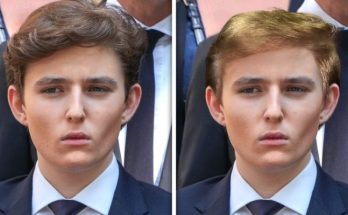If you can spot all the hidden faces in this mind-bending optical illusion in under 10 seconds, congratulations—you just might belong to the top 1% of people with extraordinary perception skills. The illusion, famously known as the “Tree of Faces,” has captivated minds for over a century and recently made a huge comeback online.

It’s not just a test of intelligence or observation—it’s both, rolled into one deceptively simple image. At first glance, it appears to be just a drawing of a tree, with twisting branches and dense leaves forming an artistic silhouette. But look closer and you’ll see something more—hidden among the intricate shapes are the faces of multiple historical figures, subtly blended into the foliage and bark. This isn’t a new trend born on social media. In fact, versions of this illusion date back to the 1800s, when they were printed in books and magazines to challenge readers and sharpen visual awareness.
The idea remains the same: find all the faces as quickly as possible. The viral challenge sweeping the internet dares you to look at the image for only 10 seconds and count how many faces you can find. If you can spot them all, that means you have exceptional visual recognition and a keen sense of detail—skills that very few people possess at that level. According to researchers who study visual cognition, most people only spot a few faces at first glance and need more time or hints to find the rest. So what makes the Tree of Faces so difficult? It’s all about how our brains work. We’re wired to understand images by focusing on the overall picture first.
That means we often miss the small components that make up the whole. In this case, the artist uses clever shading, natural patterns, and subtle linework to hide the faces in plain sight. Our brains, expecting to see a tree, tend to overlook features that don’t align with that expectation. This is an example of a cognitive bias—our minds filter out anything that doesn’t match what we already think we’re looking at. It’s a built-in survival skill that helps us make quick decisions, but it also means we sometimes miss what’s right in front of us. Another reason the illusion is so effective is something called inattentional blindness.
This happens when we’re so focused on one thing in an image that we fail to notice other important details. So even if you’re looking right at a hidden face, you might not actually “see” it unless your attention shifts to that specific area. In the most well-known version of the Tree of Faces, there are said to be 10 or possibly 11 faces hidden in the artwork. Some claim to recognize former British Prime Minister Margaret Thatcher, former Soviet leader Mikhail Gorbachev, and a few Indian political figures. While the exact identities are still debated, this mystery only adds to the fun, sparking conversation and curiosity every time the image goes viral. Optical illusions like this one do more than entertain—they offer insights into how our brains function. When visual input is unclear or complex, our brains try to fill in the blanks by making educated guesses. Sometimes those guesses are spot on, but other times they can lead us down the wrong path. Illusions also show how contrast and color blending can trick the eye into overlooking certain features, and how limited attention can prevent us from seeing what’s actually there. Want to improve your skills at spotting hidden images? Try scanning a picture slowly from top to bottom or side to side, breaking it into smaller sections. Shift your attention back and forth between the background and the foreground. Look for shapes that don’t quite match the rest of the picture—faces usually have curved lines and symmetry that stand out once you train your eyes. You can even adjust your screen’s brightness or tilt your device to catch subtle shading. With practice, your brain becomes better at picking up on hidden cues, and these skills can be useful in everyday life—from reading complex maps to noticing visual details others might miss. So what makes these illusions so endlessly fascinating? They challenge us to think differently, push our perception, and reward persistence. They also highlight how each person sees the world a little differently. While some people spot the faces instantly, others need time and guidance, showing just how unique our brains are. Even in a world dominated by digital media and flashy graphics, classic visual puzzles like this one still hold the power to amaze and entertain. So, did you pass the test? Were you able to find all the faces in under 10 seconds? If so, your perception skills are definitely above average. But even if you didn’t, don’t worry—your brain is just doing what it’s built to do. With a bit of practice, you’ll start seeing things in a whole new way. And next time you look at an image, remember: the hidden truth might be right in front of you, just waiting to be noticed.


